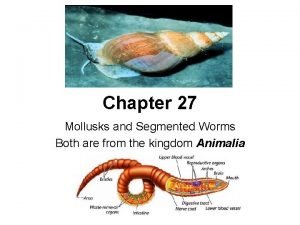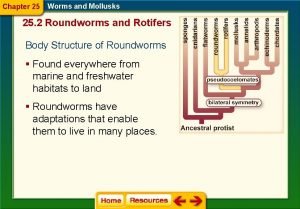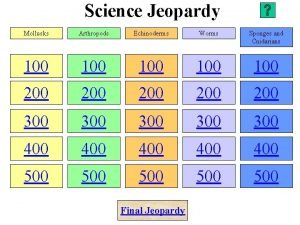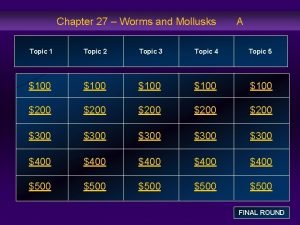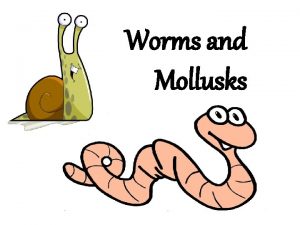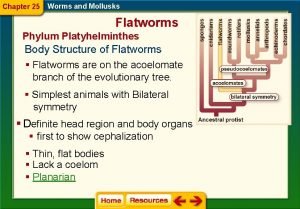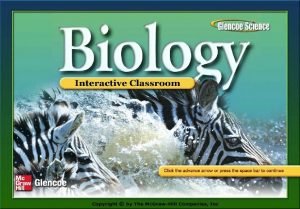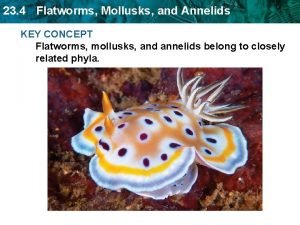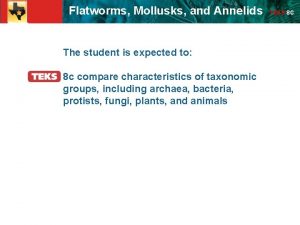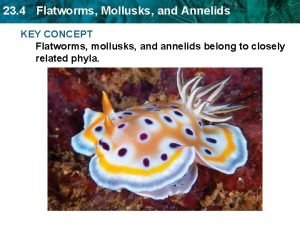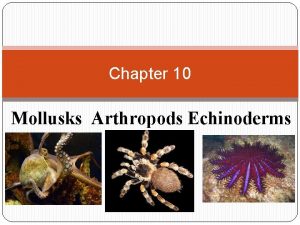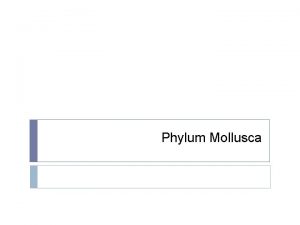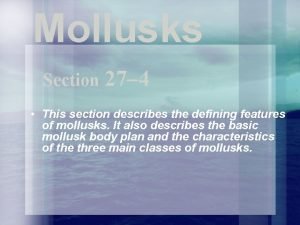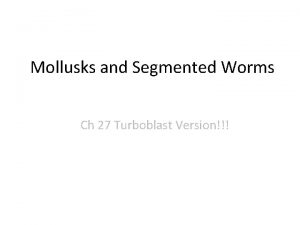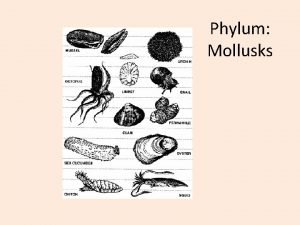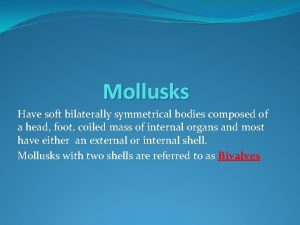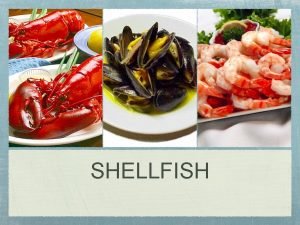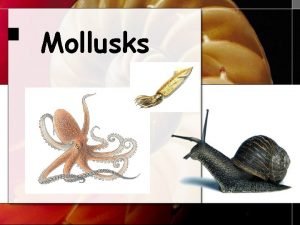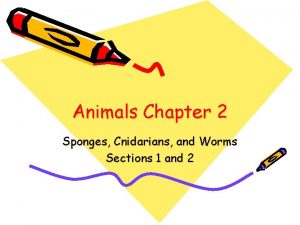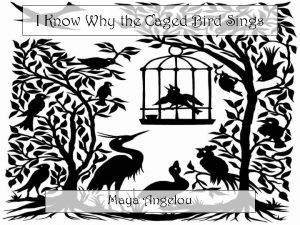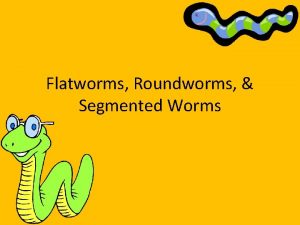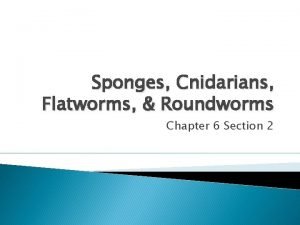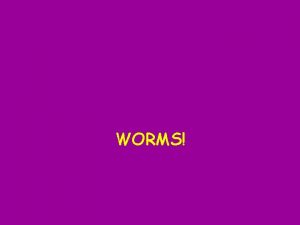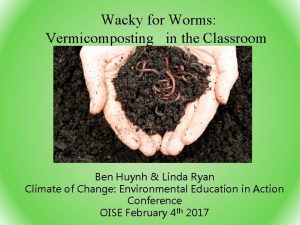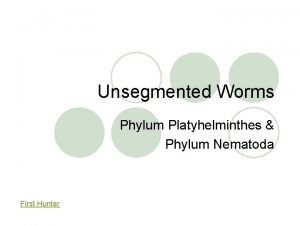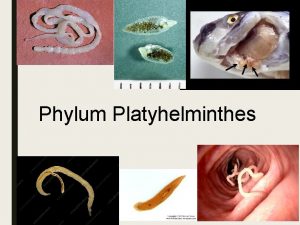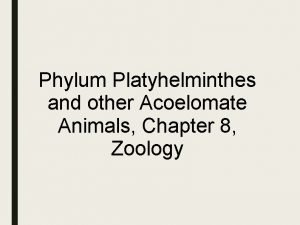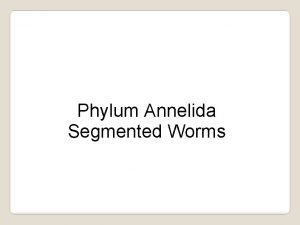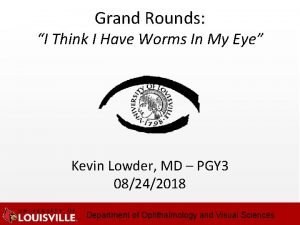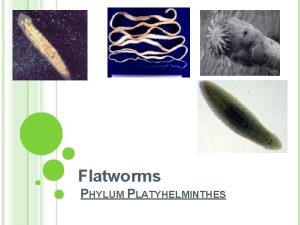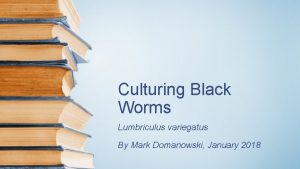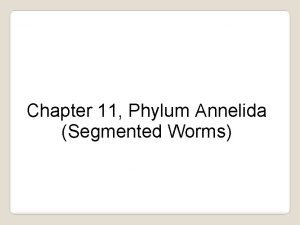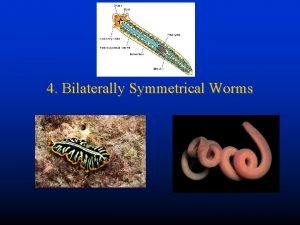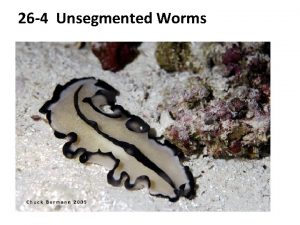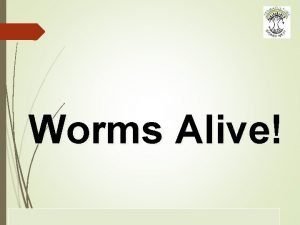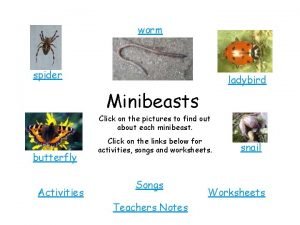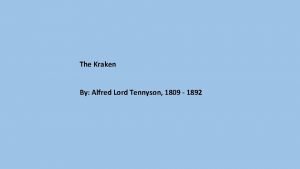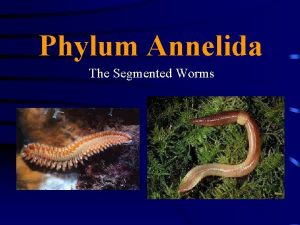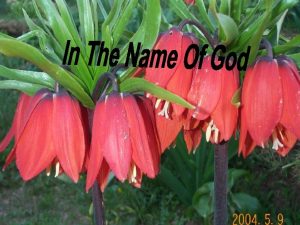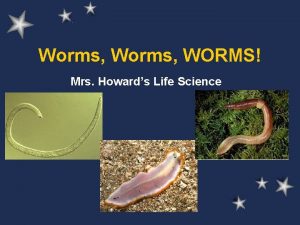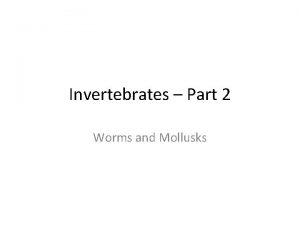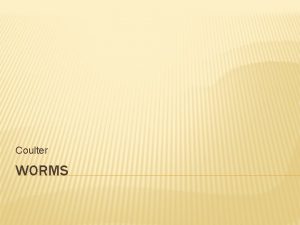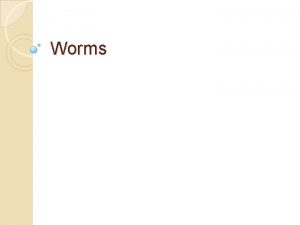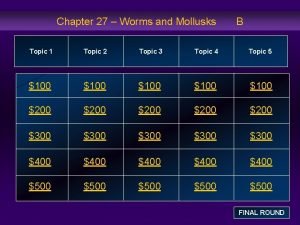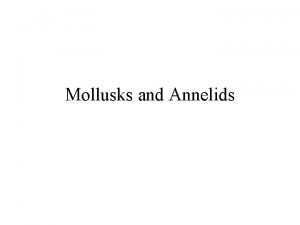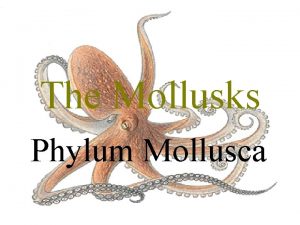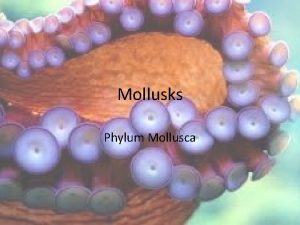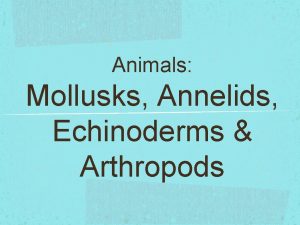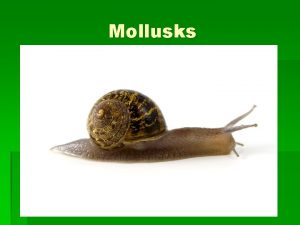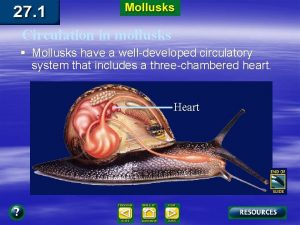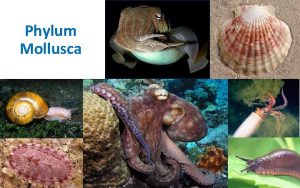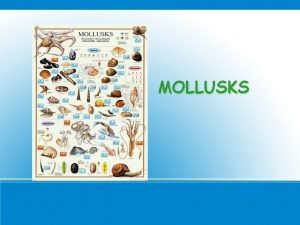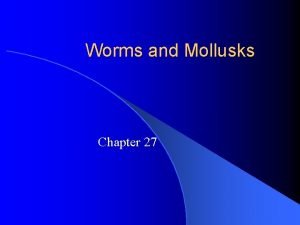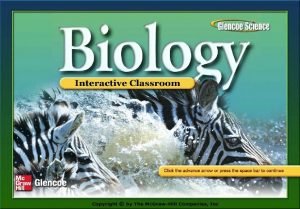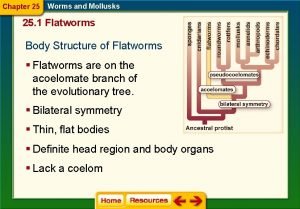Chapter 27 Worms and Mollusks A Topic 1





















































- Slides: 53

Chapter 27 – Worms and Mollusks A Topic 1 Topic 2 Topic 3 Topic 4 Topic 5 $100 $100 $200 $200 $300 $300 $400 $400 $500 $500 FINAL ROUND

Topic 1: $100 Question The simplest animals to have three embryonic germ layers. Bilateral symmetry, and cephalization are the ______. a. nematodes b. roundworms c. flatworms d. leeches ANSWER BACK TO GAME

Topic 1: $100 Answer The simplest animals to have three embryonic germ layers. Bilateral symmetry, and cephalization are the ______. a. nematodes b. roundworms c. flatworms d. leeches BACK TO GAME

Topic 1: $200 Question Some snails and other mollusks never seem to develop any form of ______. a. mucus b. polychaetes c. trochophores d. cancer ANSWER BACK TO GAME

Topic 1: $200 Answer Some snails and other mollusks never seem to develop any form of ______. a. mucus b. polychaetes c. trochophores d. cancer BACK TO GAME

Topic 1: $300 Question The type of embryonic tissue that lines a true coelom is called _____. a. mesoderm b. gastroderm c. endoderm d. ectoderm ANSWER BACK TO GAME

Topic 1: $300 Answer The type of embryonic tissue that lines a true coelom is called _____. a. mesoderm b. gastroderm c. endoderm d. ectoderm BACK TO GAME

Topic 1: $400 Question Many free-living roundworms are _____, which are animals that eat other animals. a. herbivores b. carnivores c. detritivores d. bacteria ANSWER BACK TO GAME

Topic 1: $400 Answer Many free-living roundworms are _____, which are animals that eat other animals. a. herbivores b. carnivores c. detritivores d. bacteria BACK TO GAME

Topic 1: $500 Question Roundworms have a tube-within-a-tube digestive tract with two openings—a mouth and a(an) ______. a. gut b. anus c. belly d. foot ANSWER BACK TO GAME

Topic 1: $500 Answer Roundworms have a tube-within-a-tube digestive tract with two openings—a mouth and a(an) ______. a. gut b. anus c. belly d. foot BACK TO GAME

Topic 2: $100 Question The primary host of Schistosoma mansoni is a(an) a. flatworm b. sheep c. human d. dog ANSWER BACK TO GAME

Topic 2: $100 Answer The primary host of Schistosoma mansoni is a(an) a. flatworm b. sheep c. human d. dog BACK TO GAME

Topic 2: $200 Question A filter-feeding annelid fans water through tubelike burrows and catches food particles in a ______ bag. a. shopping b. filter c. mucus d. woven silk ANSWER BACK TO GAME

Topic 2: $200 Answer A filter-feeding annelid fans water through tubelike burrows and catches food particles in a ______ bag. a. shopping b. filter c. mucus d. woven silk BACK TO GAME

Topic 2: $300 Question The foot of most cephalopods is divided into eight or more arms called ______. a. sporangia b. tentacles c. tail fibers d. toes ANSWER BACK TO GAME

Topic 2: $300 Answer The foot of most cephalopods is divided into eight or more arms called ______. a. sporangia b. tentacles c. tail fibers d. toes BACK TO GAME

Topic 2: $400 Question The shell of most mollusks is composed of ______, which is secreted by glands in the mantle. a. chitin b. proteins c. calcium carbonate d. sodium bicarbonate ANSWER BACK TO GAME

Topic 2: $400 Answer The shell of most mollusks is composed of ______, which is secreted by glands in the mantle. a. chitin b. proteins c. calcium carbonate d. sodium bicarbonate BACK TO GAME

Topic 2: $500 Question A marine animal that has a(an) ________ larva and a true coelom could be either an annelid or a mollusk—it is impossible to classify it without further information. a. polychaete b. trochophore c. carnivorous d. prokaryotic ANSWER BACK TO GAME

Topic 2: $500 Answer A marine animal that has a(an) ________ larva and a true coelom could be either an annelid or a mollusk—it is impossible to classify it without further information. a. polychaete b. trochophore c. carnivorous d. prokaryotic BACK TO GAME

Topic 3: $100 Question Many aquatic mollusks have a freeswimming larval stage, called a(an) ______ larva. a. trochophore b. carnivorous c. herbivorous d. prokaryotic ANSWER BACK TO GAME

Topic 3: $100 Answer Many aquatic mollusks have a freeswimming larval stage, called a(an) ______ larva. a. trochophore b. carnivorous c. herbivorous d. prokaryotic BACK TO GAME

Topic 3: $200 Question Bottom-dwelling annelids from the class _____ are important in marine ecosystems and form part of the diets of fishes and crustaceans. a. Polychaeta b. Oligochaeta c. Sandsof. Iwo. Jimaeta d. Chondrichthaeta ANSWER BACK TO GAME

Topic 3: $200 Answer Bottom-dwelling annelids from the class _____ are important in marine ecosystems and form part of the diets of fishes and crustaceans. a. Polychaeta b. Oligochaeta c. Sandsof. Iwo. Jimaeta d. Chondrichthaeta BACK TO GAME

Topic 3: $300 Question Annelids have a(an) ____ circulatory system, in which blood is contained in a network of blood vessels. a. open b. semi-tubular c. nephridic d. closed ANSWER BACK TO GAME

Topic 3: $300 Answer Annelids have a(an) ____ circulatory system, in which blood is contained in a network of blood vessels. a. open b. semi-tubular c. nephridic d. closed BACK TO GAME

Topic 3: $400 Question Sandworms and bloodworms are members of the class of marine annelids called ______. a. oligochaetes b. polychaetes c. sandsof. Iwo. Jimaetes d. chondrichthaetes ANSWER BACK TO GAME

Topic 3: $400 Answer Sandworms and bloodworms are members of the class of marine annelids called ______. a. oligochaetes b. polychaetes c. sandsof. Iwo. Jimaetes d. chondrichthaetes BACK TO GAME

Topic 3: $500 Question The larvae of the roundworm species named _____ form cycts in the host’s muscle tissue. a. Trichinella b. Schistomyosin c. leech d. night crawler ANSWER BACK TO GAME

Topic 3: $500 Answer The larvae of the roundworm species named _____ form cycts in the host’s muscle tissue. a. Trichinella b. Schistomyosin c. leech d. night crawler BACK TO GAME

Topic 4: $100 Question How do the body systems of parasitic roundworms generally compare to those of free-living roundworms? a. They are more complex. b. They are simpler. c. Parasitic roundworms lack a reproductive system. d. Free-living roundworms have an internal ANSWER transport system. BACK TO GAME

Topic 4: $100 Answer How do the body systems of parasitic roundworms generally compare to those of free-living roundworms? a. They are more complex. b. They are simpler. c. Parasitic roundworms lack a reproductive system. d. Free-living roundworms have an internal transport system. BACK TO GAME

Topic 4: $200 Question Which of the following is evidence that mollusks and annelids may be closely related? a. Both groups have setae. b. Both groups have a trochophore larva. c. Neither group has lungs. d. Both groups include both marine and terrestrial animals. ANSWER BACK TO GAME

Topic 4: $200 Answer Which of the following is evidence that mollusks and annelids may be closely related? a. Both groups have setae. b. Both groups have a trochophore larva. c. Neither group has lungs. d. Both groups include both marine and terrestrial animals. BACK TO GAME

Topic 4: $300 Question A type of worm that is an external parasite is the a. tapeworm. b. polychaete. c. leech. d. earthworm. ANSWER BACK TO GAME

Topic 4: $300 Answer A type of worm that is an external parasite is the a. tapeworm. b. polychaete. c. leech. d. earthworm. BACK TO GAME

Topic 4: $400 Question What causes the disease called elephantiasis? a. flukes b. ascarid worms c. hookworms d. filarial worms ANSWER BACK TO GAME

Topic 4: $400 Answer What causes the disease called elephantiasis? a. flukes b. ascarid worms c. hookworms d. filarial worms BACK TO GAME

Topic 4: $500 Question Earthworms are oligochaetes because they a. have just a few setae on each segment. b. reproduce sexually. c. have bodies made up of identical segments. d. are parasitic. ANSWER BACK TO GAME

Topic 4: $500 Answer Earthworms are oligochaetes because they a. have just a few setae on each segment. b. reproduce sexually. c. have bodies made up of identical segments. d. are parasitic. BACK TO GAME

Topic 5: $100 Question Earthworms benefit gardeners because their tunnels provide passageways for a. leeches. b. polychaetes. c. plant roots and water. d. planarians. ANSWER BACK TO GAME

Topic 5: $100 Answer Earthworms benefit gardeners because their tunnels provide passageways for a. leeches. b. polychaetes. c. plant roots and water. d. planarians. BACK TO GAME

Topic 5: $200 Question Why is an open circulatory system adequate for a bivalve, such as a clam, but not for a cephalopod, such as a squid? a. Bivalves are largely sedentary, while squids move quickly. b. Bivalves have relatively high oxygen demands. c. Cephalopods have relatively low oxygen demands. d. Bivalves are filter-feeders, and cephalopods are plant eaters. ANSWER BACK TO GAME

Topic 5: $200 Answer Why is an open circulatory system adequate for a bivalve, such as a clam, but not for a cephalopod, such as a squid? a. Bivalves are largely sedentary, while squids move quickly. b. Bivalves have relatively high oxygen demands. c. Cephalopods have relatively low oxygen demands. d. Bivalves are filter-feeders, and cephalopods are plant eaters. BACK TO GAME

Topic 5: $300 Question Mollusks have a. a pseudocoelom. b. a true coelom. c. a body cavity between the ectoderm and mesoderm. d. no body cavity. ANSWER BACK TO GAME

Topic 5: $300 Answer Mollusks have a. a pseudocoelom. b. a true coelom. c. a body cavity between the ectoderm and mesoderm. d. no body cavity. BACK TO GAME

Topic 5: $400 Question The most active mollusks are the a. bivalves. b. cephalopods. c. gastropods. d. nudibranchs. ANSWER BACK TO GAME

Topic 5: $400 Answer The most active mollusks are the a. bivalves. b. cephalopods. c. gastropods. d. nudibranchs. BACK TO GAME

Topic 5: $500 Question A pond snail is an example of a(an) a. roundworm. b. flatworm. c. annelid. d. gastropod. ANSWER BACK TO GAME

Topic 5: $500 Answer A pond snail is an example of a(an) a. roundworm. b. flatworm. c. annelid. d. gastropod. BACK TO GAME

FINAL ROUND Question: a. Choice 1 b. Choice 2 c. Choice 3 d. Choice 4 ANSWER BACK TO GAME

FINAL ROUND Answer Question: a. Choice 1 b. Choice 2 c. Choice 3 (correct answer) d. Choice 4 BACK TO GAME
 Are worms mollusks
Are worms mollusks Chapter 25 worms and mollusks worksheet answers
Chapter 25 worms and mollusks worksheet answers Section 38-1 review echinoderms answer key
Section 38-1 review echinoderms answer key Section 27-1 flatworms
Section 27-1 flatworms Chapter 27 worms and mollusks
Chapter 27 worms and mollusks Characteristics of roundworms
Characteristics of roundworms Are worms mollusks
Are worms mollusks Chapter 25 section 3 mollusks
Chapter 25 section 3 mollusks Clincher sentence examples
Clincher sentence examples Topic about internet
Topic about internet Section 4 flatworms mollusks and annelids
Section 4 flatworms mollusks and annelids Section 4 flatworms mollusks and annelids
Section 4 flatworms mollusks and annelids Reviewing key concepts: flatworms, annelids, and roundworms
Reviewing key concepts: flatworms, annelids, and roundworms Mollusks arthropods and echinoderms
Mollusks arthropods and echinoderms What is a mollusks
What is a mollusks Single shelled examples
Single shelled examples Segmentation in mollusca
Segmentation in mollusca Classes of mollusks
Classes of mollusks Are mollusks symmetrical
Are mollusks symmetrical Oyster characteristics
Oyster characteristics Mollusks tongue
Mollusks tongue Mollusks phylum
Mollusks phylum Mollusca multicellular
Mollusca multicellular Sponges cnidarians and worms
Sponges cnidarians and worms Personification in caged bird
Personification in caged bird Segmented flatworm
Segmented flatworm Sponges cnidarians and worms
Sponges cnidarians and worms Trojan horses spyware and worms are all forms of
Trojan horses spyware and worms are all forms of Chapter 5 selecting a topic and a purpose
Chapter 5 selecting a topic and a purpose Specific purpose statements
Specific purpose statements Unsegmented worms meaning
Unsegmented worms meaning Pile worms teeth
Pile worms teeth Platyhelminthes
Platyhelminthes Roundworms nervous system
Roundworms nervous system Manorialism def
Manorialism def Platyhelminthes characteristics
Platyhelminthes characteristics Characteristics of platyhelminthes
Characteristics of platyhelminthes Ganglia in annelida
Ganglia in annelida Bird's eye view angle
Bird's eye view angle Tư thế worm breton
Tư thế worm breton Worms
Worms Platyhelminthes- characteristics
Platyhelminthes- characteristics Culturing blackworms
Culturing blackworms How do worms reproduce
How do worms reproduce What is an annelid
What is an annelid Ribbon worms symmetry
Ribbon worms symmetry Unsegmented worm
Unsegmented worm Concordat of worms
Concordat of worms Greg worms
Greg worms Ladybird worm
Ladybird worm The kraken poem
The kraken poem Segmented worms characteristics
Segmented worms characteristics Karl-hofmann-schule worms
Karl-hofmann-schule worms Seat worm
Seat worm
